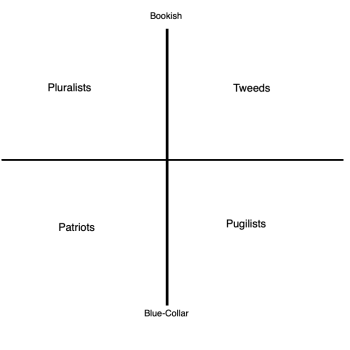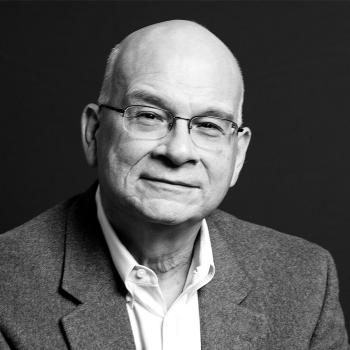 A few days ago, the Trump administration leaked a draft executive order, “Making Federal Buildings Beautiful Again,” that purports to revise the principles governing the construction of federal office buildings. It’s quite good—in fact, I’d classify the proposed order as one of the most irrefutably positive choices this administration has made.
A few days ago, the Trump administration leaked a draft executive order, “Making Federal Buildings Beautiful Again,” that purports to revise the principles governing the construction of federal office buildings. It’s quite good—in fact, I’d classify the proposed order as one of the most irrefutably positive choices this administration has made.
The order observes—correctly—that modern federal architecture “range[s] from the undistinguished to designs the public widely consider[s] uninspiring, inconsistent with their surroundings and the architectural heritage of a region, and just plain ugly.” Assuming the order is promulgated, that will now change. Under the order’s terms, “architectural styles—with special regard for the classical architectural style—that value beauty, respect regional architectural heritage, and command admiration by the public are the preferred styles for applicable Federal public buildings.” It also includes this delightful shot across the bow: “Architectural designs in the Brutalist and Deconstructivist styles, and the styles derived from them . . . shall not be used.”
As a former denizen of one of the most hideous federal buildings ever constructed, I was overjoyed to see this proposal. I tend to think that federal buildings—in particular courthouses—have a responsibility to communicate, in their design, the principles of tradition, order, and stability that underpin any “rule of law.” And, on an even simpler level, human flourishing requires the presence of beauty; most federal buildings lack that entirely.
One might reasonably think this order is something almost everyone in America can get behind. For one thing, it’s actually quite modest: there’s no requirement here that every federal building that currently resembles an air conditioner be retrofitted with Corinthian columns. Nor does it dictate that a strictly classical approach be used in every case: what matters is beauty, regional heritage, and public admiration. Who can argue with that? I’m quite certain that if I took a poll in my (very liberal) neighborhood, this particular mandate for federal building design would command supermajoritarian support.
But, because we can’t ever have nice things anymore, it turns out that the architectural profession is up in arms about the proposed order. The American Institute of Architects released a statement declaring that it “strongly opposes uniform style mandates for federal architecture” because architecture must “reflect[] our rich nation’s diverse places, thought, culture and climates” (evidently reading comprehension is difficult—the proposed order expressly centers regional heritage) and exemplify “the freedom of thought and expression that are essential to democracy.”
Press coverage followed a similar theme: the proposed order is nothing but a reactionary (maybe even racist) mandate, which all the real experts in the field—the architectural profession—properly oppose. Amanda Kolson Hurley argues in The Atlantic that “trying to adjudicate whether a design will ‘value beauty’ and ‘command the admiration of the public,’ as the draft document imagines, would be a farce” (it wouldn’t). The New York Times article about the order is a litany of hand-wringing: Columbia architecture school dean Amale Andraos is quoted as bemoaning the loss of “a time when the United States’ leadership could be seen through the cultural sophistication of its government building programs where architecture was asked to exude power but did so often with complexity and sensitivity to the wealth that comes from diversity.” (Sure.)Washington Post architecture critic Philip Kennicott complains that the man behind the proposed order “is not an architect or professional designer.” (So?) And on and on it goes.
The driving assumption beneath all this is that there’s a kind of objective, value-free consensus about “good” and “bad” architecture, which only the members initiated into the clerisy—the profession—are capable of discerning and applying. But it’s flatly false that architectural decisions—just like all meaningful decisions—are somehow “neutral” or otherwise free of moral significance. To name just one example, one of my favorite architectural writers, Juhani Pallasmaa, wrote extensively—particularly in his excellent book The Eyes of the Skin—about the need for architecture to engage not only the intellective, but also the “incarnate” nature of human beings, and so to be beautiful in a tactile sense as well as a visual one. That is an inherently metaphysical (and quite classical) view of human beings, which in turn informs architectural practice.
The real issue—and the true root of the backlash to the proposed executive order—is that a decent chunk of the profession simply rejects the notion that architecture should be conducive to human flourishing or “beautiful” in any morally significant sense.
Celebrity architect Peter Eisenman complains about the possibility that human beings could ever be comfortable inside the buildings they construct: “I do not believe that the way to go, as you suggest, is to put up structures to make people feel comfortable, to preclude that anxiety. What is a person to do if he cannot react against anxiety or see it pictured in his life? After all, that is what all those evil Struwwel Peter characters are for in German fairy tales.” Bernard Tschumi carries that misanthropic impulse further, declaring that “any relationship between a building and its users is one of violence, for any use means the intrusion of a human body into a given space, the intrusion of one order into another. . . Entering a building may be a delicate act, but it violates the balance of a precisely ordered geometry (do architectural photographs ever include runners, fighters, lovers?) . . . The body disturbs the purity of architectural order. It is equivalent to a dangerous prohibition.”
Nor is this eradicative impulse restricted to human beings: a number of architects are keen to stamp out anything that hints at transcendence. Fil Hearn explains that the Brutalist impulse was driven by a deliberate desire to “desacralize” architecture, flattening all variation into a single drab sameness: “It became a matter of principle to specify catalog items rather than custom-made ones and to prefer humble materials to those with elite associations.” And Kathryn Moore makes that trajectory even more explicit, rejecting the pursuit of sublimity—of beauty—in architecture on the grounds that such a quest is politically illegitimate. “The notion that there is ‘knowledge of something not merely human’ needed in order to achieve a design, loads the dice against the student. From a pragmatic perspective it sets up a whole series of impossible tasks which are bewildering and undemocratic.”
It wasn’t hard to find these ideas—I only had to leaf through the copy of Introducing Architectural Theory on my desk. I have no doubt there are plenty of others. Suffice it to say that the profession’s theorists are quite open about the fact that their practices are informed by explicitly philosophical commitments—many of which are repulsive to the vast majority of people. There is no desire here for beauty or for harmony between human and structure, only a kind of lurching nihilism of concrete and steel.
All that to say: it is of no moment that the architectural profession—however one defines it—opposes the proposed order mandating a return to beauty and humanity. That opposition is almost certainly not grounded in neutral principles, but in highly contestable philosophical opinions that most people find abhorrent. The sooner that the backers of traditional architecture tear down the façade of “objectivity” and reveal the underlying clash of simply incommensurable values, the better.
That’s the kind of “authenticity” we need (along with maybe a few more Greek columns—I’ll take what I can get).












